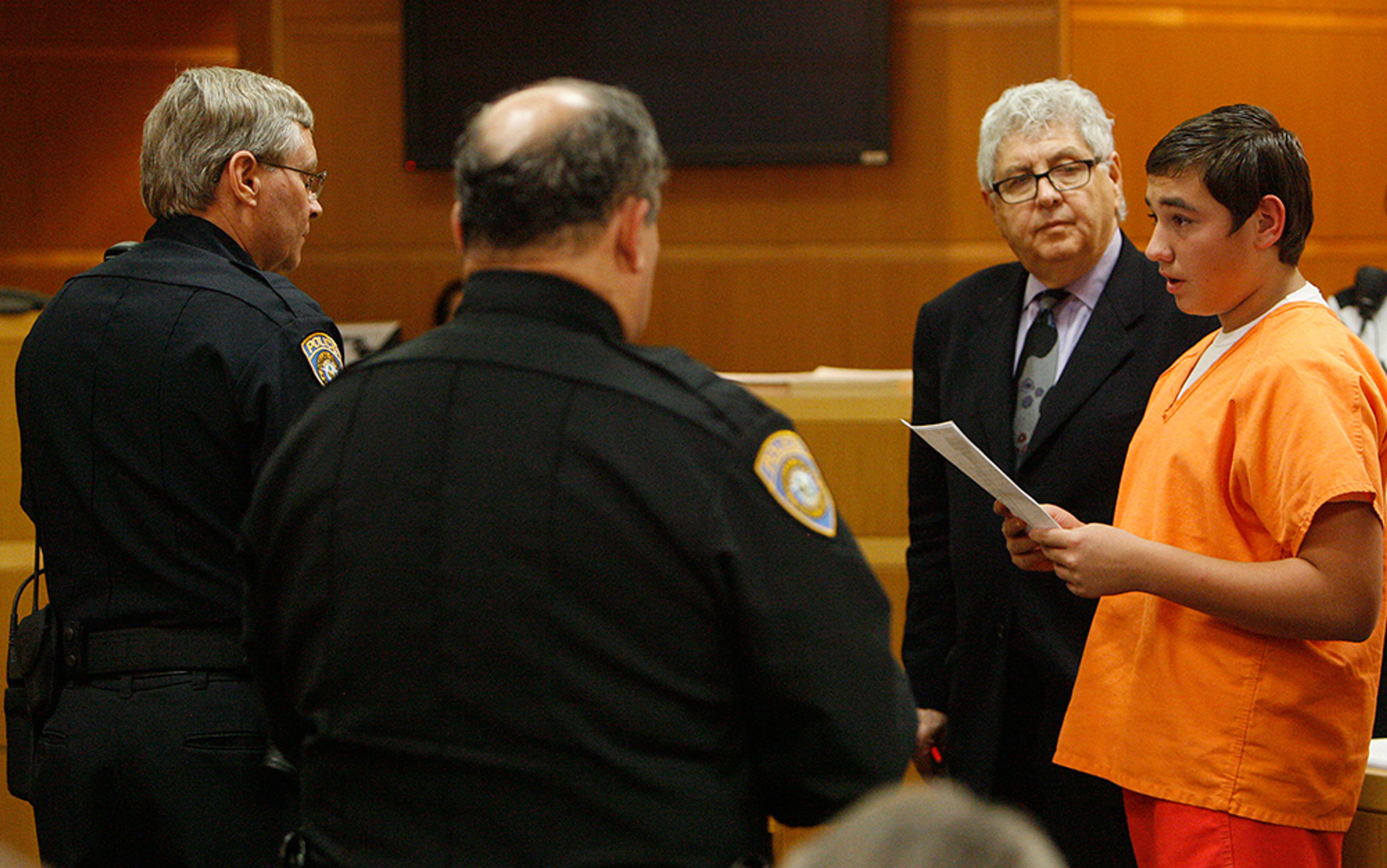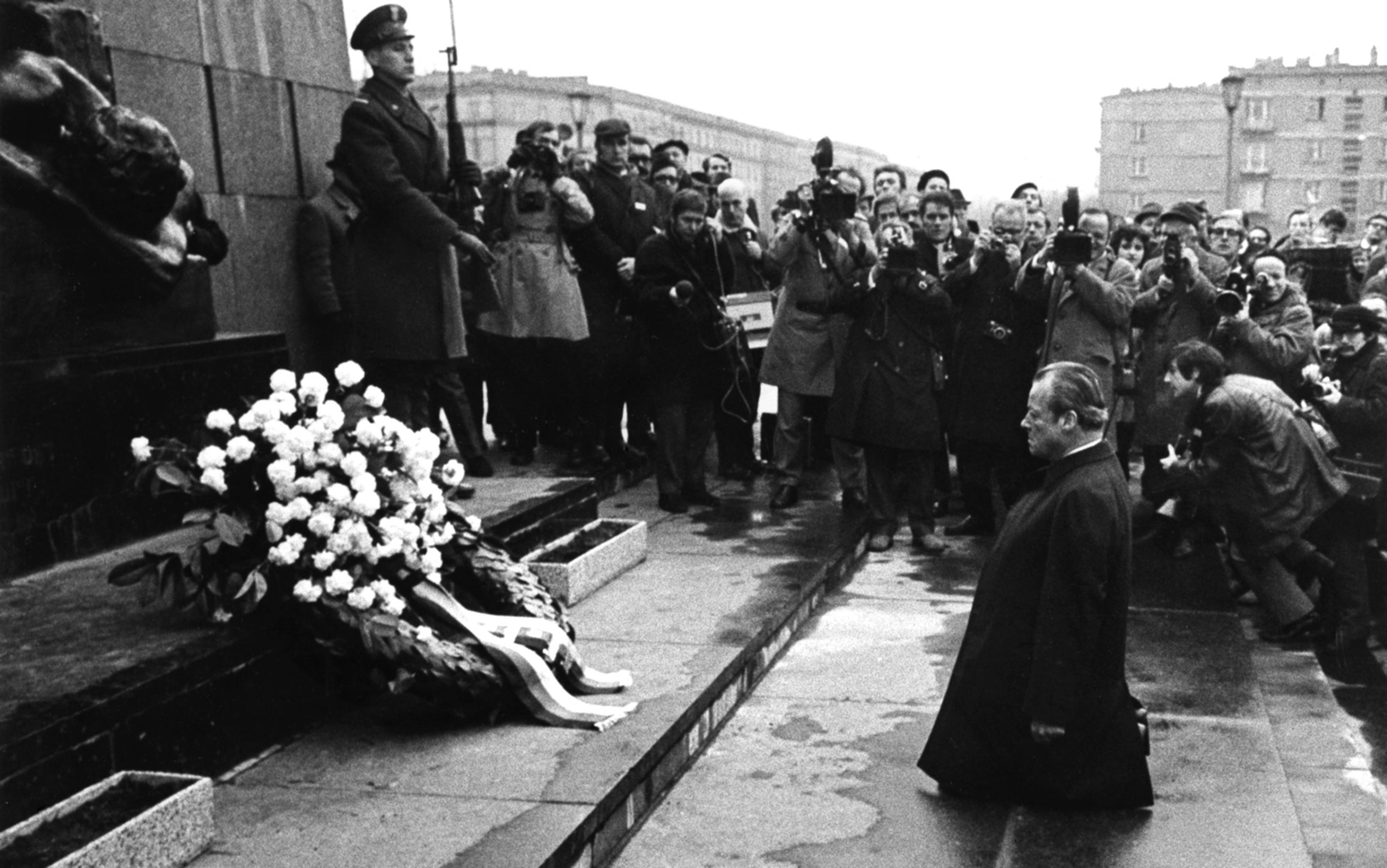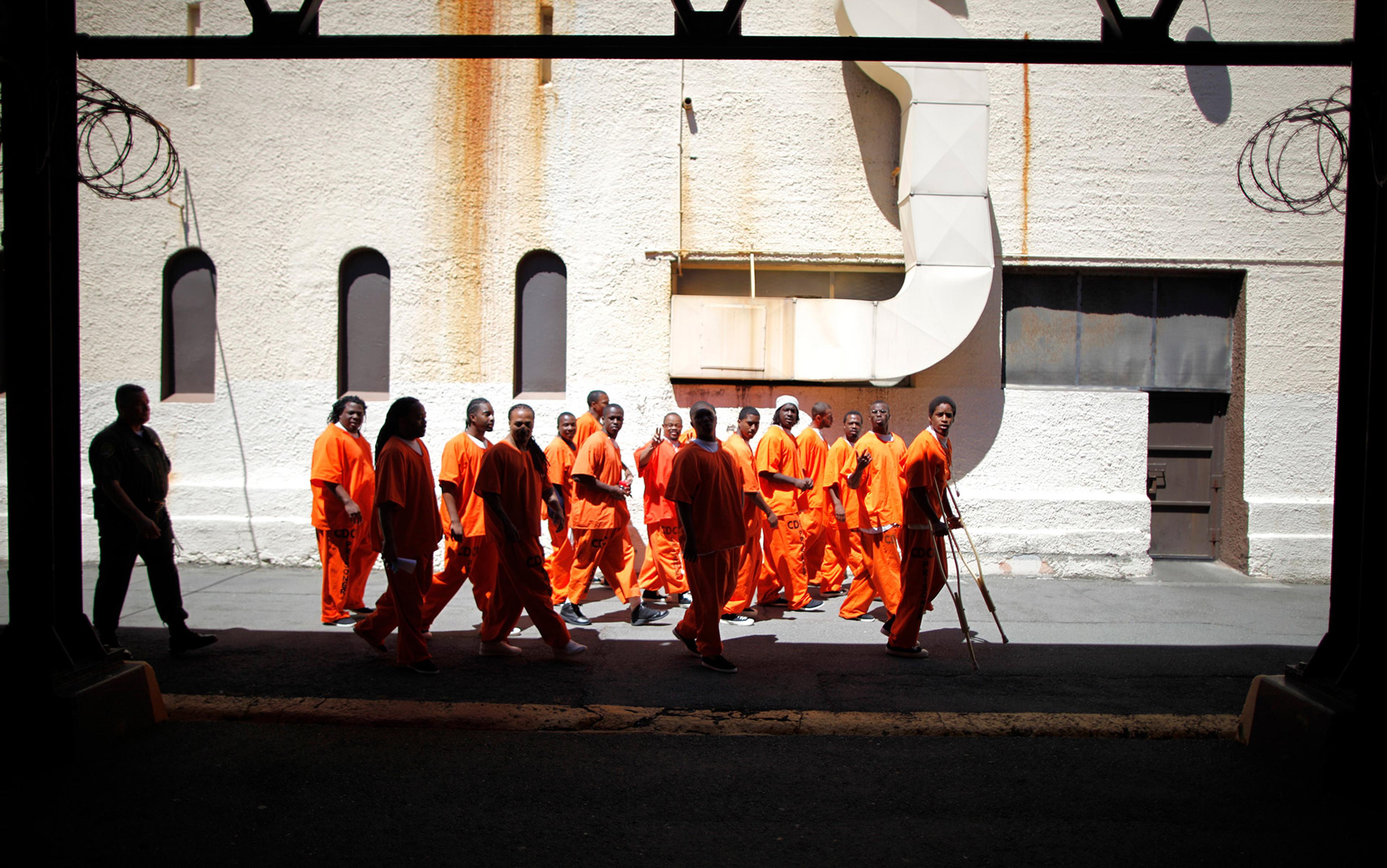In the summer of 1977, a Yale graduate named Richard Herrin bashed in the head of his sleeping ex-girlfriend Bonnie Garland because she had dumped him. Garland’s parents found her still alive, only to watch her die from her injuries in hospital. The fugitive Herrin, meanwhile, found a priest, confessed to the killing and asked forgiveness.
The case became an immediate media darling because of the seeming mismatch between the lovers. Herrin, who was Hispanic, grew up in Los Angeles and had attended Yale on a full scholarship. There he met Garland, who came from a prominent white family – her father was a well-known attorney and she a classic ‘society girl’. She reportedly told Herrin that she wanted to see other people, inspired by a choir trip.
Herrin, who had left Yale by the time of the attack, became a sympathetic figure in the public eye, despite his admitted guilt. He supposedly had so much trouble fitting in at Yale that he was cast as a victim of society – a kid who could have done better but for his tragic background.
The Catholic Church raised money and vouched for his good character. He was released on bail pending trial and his apparent remorse was so well publicised that the Garlands were angered by the wave of popular sympathy for their daughter’s killer. While awaiting trial, Herrin lived in a Catholic community under an assumed name. At his trial for murder, the jury – in defiance of the judge – convicted Herrin of the lesser crime of manslaughter, carrying a maximum term of 25 years; he served less than 20 and was freed in 1995.
Herrin’s lawyer and the priests he was living with still thought that the 25-year sentence was too severe. Willard Gaylin, a psychiatrist who wrote a book about the crime (The Killing of Bonnie Garland, 1982), said that the Catholic perspective was shaped by the ‘Christian vision of the purpose of life [as] man’s relationship to a God of love and forgiveness [which] preempts the primary importance of life on earth’. In other words, under a Christian model, forgiveness is more important than punishment. Therefore, Herrin should be forgiven since he was, after all, sorry.
Garland’s mother, however, refused to accept that Herrin’s apology meant anything; she believed that it was irrelevant and should have been disregarded in determining his sentence. (Garland’s parents later sued Herrin and won $40,000 for emotional distress because of their daughter’s death.) In fact, the court of public opinion turned oddly against the Garlands, accusing them of holding onto an old grudge when they should let it go and move on. Hadn’t Herrin apologised, after all?
What is ‘I’m sorry’ worth? The idea that apologies heal wounds and restore justice in the community isn’t exactly a new idea. Apologies are an ancient form of acknowledging wrongness and culpability.
They aren’t always kind and gentle. Paying penance is rarely pleasant and usually involves fasting, self-mutilation, and other forms of debasement. ‘Penitentiary’ comes from the word ‘penitent’, and the concept was developed by the Quakers, the first American prison reformers, who placed offenders in isolation to provide room for quiet contemplation and reading of the Bible. The idea was that a person who committed crimes needed to sit and stew in the juices of his own regret away from the temptations of the world in order to exact the kind of change from the inside-out that the Quakers found most desirable. There is also a long religious tradition – demonstrated by the Salem witch trials of the late 17th century – of confining and torturing someone until they confessed and repented.
Apologies have a role in societies other than Western ones. In Japanese culture, for example, apologies are common and generally accepted by the wronged party as an agreement to move forward. In fact, the Japanese culture tends to apologise so frequently that it’s almost pro forma and lacks real meaning. But at least some Japanese scholars debate whether or not this system of formal apologies translates into any real change of heart, and a growing victims’ rights movement believes that they may even be harmful.
But in the American criminal justice system, apologies have a confusing and contradictory role. A great deal of the current justice system is based on Christian notions of guilt and forgiveness applied in a hodge-podge manner to a system of individual rights. Part of the point of prison, after all, is both to exact revenge and to rehabilitate – two objectives that are in constant conflict. As a result, when criminal defendants apologise, they sometimes incur more punishment and sometimes less, never mind whether or not their apology is deemed to be sincere.
On one hand, expressing remorse is a sign that a defendant takes responsibility for their actions and realises the wrongness of the crime. Judges still have the ability to take apologies into account when assigning sentences. In the current US Federal Sentencing Guidelines, expressing remorse is a good reason to reduce someone’s prison term – although what constitutes remorse is left vague and undefined. The statute allows judges to reduce the sentence of someone who ‘clearly demonstrates acceptance of responsibility for his offence’, but gives no other guidance on how to figure this out. (Rather like pornography, a real apology seems to rely on an ‘I know it when I see it’ approach.) Admitting guilt and taking responsibility had become a trial strategy as well as a public-relations one for white-collar criminals and large companies trying to avoid payment of large criminal fines. And defendants who express remorse are less likely to get the death penalty according to some studies. It’s not uncommon, for example, for observers to a criminal trial to remark on how the defendant looks stoic or even smiles. These are read as signs of an unsorry character.
Nick Smith, a professor at the University of New Hampshire, persuasively outlines a series of guidelines for determining how apologies should be used in sentence reduction, including how they should function in the law (since an apology can also be admitted as a confession and, thus, get the defendant into more trouble). Smith’s rigorous examination of apologies indicates just how fraught the territory can be in a system made up of processes. In his book Justice Through Apologies (2014), Smith generally supports sentence reductions for apologies within specific guidelines, such as accepting blame, identifying the specifics of harm, recognising the victims, and disregarding self-interest. His aim is to reduce the number of insincere apologies as a way to justify their use.
There is a sense that restorative justice provides compassion for victim and perpetrator alike: it fosters dialogue between parties often ideologically at odds
Given this view, apologies and remorse seem like a good way to reduce the problem of mass incarceration, and terms not dissimilar to the Christian brothers in Herrin’s case have been borrowed by proponents of restorative justice and other extrajudicial forms of reconciliation that attempt to make amends between perpetrator and victim. Restorative justice has long had an uneasy relationship with the victims’ rights movement, which gained steam in the 1980s ‘tough on crime’ era as a way to give victims more of a voice in sentencing decisions. Through restorative justice techniques, which often involve a therapy-like setting and discussion of harm, victims can move towards healing and feel more involved in the process, which might involve more than just a stiff prison sentence.
Almost everyone seems to agree that any worthwhile apology must take into account the people directly harmed – the victims – with the goal of repairing social relationships and reintegrating victim and perpetrator into society. In most cases where restorative justice is applied today, both sides know each other (or at least voluntarily seek each other out), so there is a more personal feeling of violation at stake. There is also a sense that restorative justice provides compassion for victim and perpetrator alike: it fosters dialogue between parties who are often ideologically at odds. Research seems to support the notion that restorative justice is generally a good thing for all parties – it helps an overburdened judicial system and gives everyone a voice.
It’s hard to say anything bad about forgiveness when it’s something we all intuitively understand. Apologising is often the first thing parents teach their children. And it is admirable to see and praise people who are able to forgive instead of hate their attackers. But are apologies also a way of glossing over certain kinds of crimes? Do they serve the long-term interests of justice, or are they instead presenting another confusing theoretical inconsistency in the already labyrinthine world of criminal justice?
In 2010, a 19-year-old Floridian named Conor McBride shot his girlfriend Ann Margaret Grosmaire in the head during an argument. McBride went immediately to a police station and confessed. As with Bonnie Garland, Grosmaire was found alive but died later.
Rather than go through a traditional trial, her parents asked McBride to participate in a restorative justice meeting. During the process, the Grosmaires explained all of the hurt they suffered because of their daughter’s death, and McBride described the crime in detail, including the fact that Grosmaire, on her knees, was begging for her life when he shot her.
In both McBride’s story and Herrin’s, there’s a disturbing, if less discussed, underlying narrative – that of the domestic abuser who is finally caught. According to accounts, McBride and Grosmaire had been fighting for two days and there was evidence their relationship had controlling and abusive elements: McBride had hit Grosmaire before. Similarly, Garland had apparently told Herrin the night of her death that she wanted to see other people, prompted by a school trip where she was separated from him for a period of time. Both relationships were described as very passionate, often a code word for abusive. Neither man denied his guilt. Both were immediately repentant and went to an authority figure. (Both were, in any case, likely to be caught.) The perpetrators were well-known to the victims and the victims’ families. And both stories seem to present instances of domestic abuse cases where the perpetrators were genuinely sorry. (Most domestic abusers are immediately and genuinely sorry after acting upon their impulses.)
In McBride’s case, the victim’s parents pursued forgiveness over punishment because of a sense that this was what their daughter wanted. Like Herrin, the Grosmaires were Catholic, which appears to have motivated their approach to no small degree. Grosmaire’s father says that he heard his daughter’s voice say ‘Forgive him’. He describes an out-of-body experience where he sees his daughter become like Jesus and his deep religious belief motivates him to seek forgiveness. Ultimately, McBride was given a sentence of 20 years plus probation. The New York Times Magazine reported that the Grosmaires had asked for 10 to 15 years; the Florida prosecutor made the final decision on sentencing. (McBride also told The New York Times Magazine that he wanted to work with animals when he got out of prison because his victim had loved animals.)
Because there are no real rights attached to apologies, they can sometimes violate free speech
What’s the logic in giving someone like McBride a lighter sentence because he is (or seems) apologetic as opposed to the many other people in prison who were not lucky enough to have the families of their victims so willing to forgive?
While the idea of reconciliation between victim and perpetrator has a certain appeal in these two instances, it seems to favour a certain type of domestic crime – one where the victim’s family feels that they know the defendant well enough to judge sincerity – and a certain type of criminal – the kind capable of looking or sounding apologetic. Not only is this flawed as general policy, it also raises the question of whether apologies undermine the role of the judicial system to deter and stand up for the rights of abused women generally.
There are other concerns as well. For one thing, part of the force of an apology is the shame of the apologiser, the sense that accepting responsibility and coming to terms with an action is more painful than the action itself. An emphasis on apologies can also lead to coercive policies that are something akin to police interrogations forcing people to confess under the idea that it’s somehow easier or better to come clean. Often the people being asked to apologise are those who are already weaker – youth, minorities, or people who have been targeted by the justice system. Plus, because there are no real rights attached to apologies, they can sometimes cross the boundary into a violation of free speech.
Court-ordered apologies are especially problematic. A Washington State youth identified only as KH-H was found guilty of sexual assault and ordered to send a ‘sincere written letter of apology’ to his victim, a teenage girl he knew from school. KH-H appealed against the letter punishment, arguing that it violated his First Amendment rights. The Washington Court of Appeals held that the court could require him to write this letter, even if KH-H was not sorry. The theory was that the letter was a means of ‘rehabilitation’.
One judge dissented from the majority decision, arguing that this type of forced apology was both bad law and bad policy: ‘In the name of rehabilitation, the condition here at issue would force a citizen to apologise for an action even if he felt no remorse and to admit to a wrongful action even if he sincerely felt he was not in the wrong.’
Here, the judge who assigned the letter and the prosecutor are doing more than enforcing rights: instead, they are asking the defendant to grovel and embrace his flawed nature, acknowledge that he is scum, and make amends. This bit of self-help philosophy can seem useful in small doses, but as an overall scheme of punishment it recalls very old ideas of punishment and rehabilitation. We can almost imagine that the defendant is being placed metaphorically in stocks in the town square and mocked for his crimes.
The same exercise happens in parole hearings. There is limited evidence to show that defendants who go through restorative justice methods reoffend less than others, and these studies are fairly inconclusive and present a very small sample. There’s nothing to confirm the folk wisdom that sorry people reoffend at lower rates than unrepentant ones.
In prison, being sorry and making amends for what you have done is so commonplace that many inmates, without asking, will volunteer all the reasons why they have done something wrong – all of their bad choices to pursue something other than the straight and narrow path. It’s as if they are practising for the parole board hearing where they must explain to the hearing officers why they deserve to live among those of us who are free. Once I asked a man serving a life sentence what would happen if he weren’t sorry. He said that it was ‘unthinkable’ because it raised too many questions that could never be answered. In other words, by embracing apologies and individual responsibility, those who are incarcerated or facing incarceration can in some measure participate in the terms of a system that will decide their future.
For powerful figures, apologies are vague and serve to restore order and, often, to rehabilitate a public image
Plus, there is no clear standard of what constitutes an acceptable or sincere apology. As a result, individuals facing parole hearings often desperately grasp at many ways to show that they are models of repentance, while prosecutors counter by portraying everyone as monstrous career criminals. The prominent role of individual responsibility, of course, moves attention away from systemic patterns, such as a society that locks up six times as many African-Americans as whites.
In a system where justice is supposed to be impartial, the apology is almost too personal. Particularly, its impact is often tied to the subject’s social status. If the least powerful offenders end up proffering multiple, self-flagellating apologies from prison, the apology indemnifies the most powerful. When Goldman Sachs CEO Lloyd Blankfein, JP Morgan CEO Jamie Dimon and other leading figures in the 2008 financial collapse apologised to federal officials and, ostensibly, the public, their apologies were widely reported as occasions of considerable gravity and consequence. The Justice Department never pursued criminal charges against any individual and, instead, gave the banks ample opportunities to enact procedures designed to ensure better compliance – in other words, the focus was on preventing recidivism rather than punishment.
Apologies, therefore, seem to bring the weight of their offences further down on the relatively weak, serving to validate their punishment. For powerful figures, it’s quite the opposite – apologies are vague and serve to restore order and, often, to rehabilitate a public image. But what, specifically, are they apologising for?
Jamie Dimon, for example, said that JP Morgan’s losses were ‘embarrassing’ and testified that the ‘buck stops with me’. He appears to take responsibility, but for what? The consequences for him are fairly minimal.
When people convicted of violent crimes apologise, the apology often involves explicit acknowledgement of the consequences of their actions. When the powerful apologise, generalisations or banalities in the vein of ‘mistakes were made’ often suffice.






